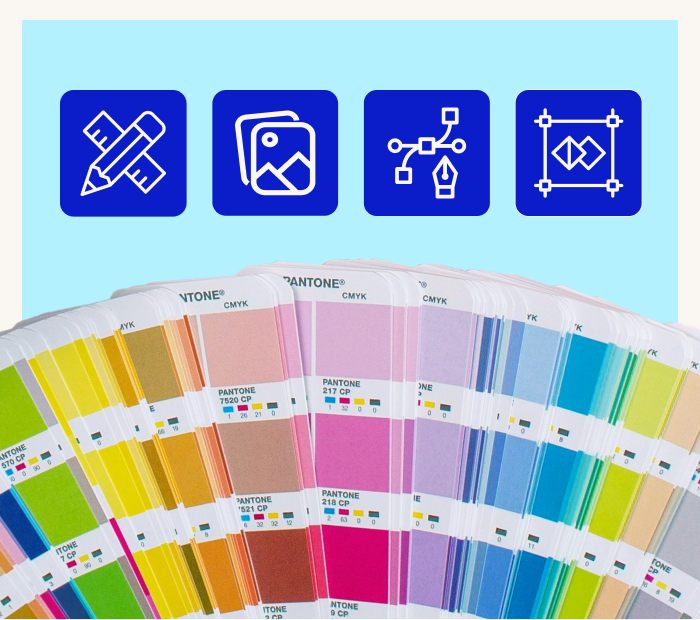
What is content modelling?
Content modeling is a crucial aspect of website development, content management, and web UX/UI design services. The process begins with analysing content types, such as articles, photos, and videos, considering their intended purposes and attributes like titles and authors. Content modeling establishes relationships between content types, creating a structured and interconnected content ecosystem. It also involves implementing data structures or schemas within a content management system (CMS) to manage and display content effectively on the platform. In simple terms, content modeling is like creating a blueprint or framework for the content that will be displayed to users.
What are the fundamental components of modelling content?
The fundamental components of modelling content include identifying and defining the various content types that will be featured on a digital platform. These content types can contain articles, videos, photos, and more, each with unique content attributes and properties. Relationships between content types are established to create a cohesive ecosystem. Organising content into categories or taxonomies is vital for easy navigation. Lastly, content modelling determines how content is presented, ensuring a consistent and user-friendly experience.
What advantages does content modelling offer?
Content modelling offers several advantages in the digital content creation process and management. It provides a design wireframe for organising and defining various types of content, attributes, and relationships, which leads to more consistent and coherent content items. This consistency enhances the user experience, making content more accessible to find and navigate.
Additionally, content modelling facilitates content reusability, scalability, and adaptability, enabling efficient updates and expansion as content needs to evolve. It empowers content creators with a clear roadmap for crafting actual content that aligns with objectives and audience needs. It also enhances collaboration between content creators and developers by providing a common language and structure.
Best practices for effective content modelling
By following these best practices, you can create an effective content model that supports your content strategy and enables efficient content management on your digital platform.
- Understand your target audience well. Identify their needs, preferences, and goals.
- Perform a comprehensive assessment of your existing content. Evaluate its quality, structure, and organisation to identify content gaps, redundant information, and opportunities for improvement.
- Establish clear objectives to guide your content modelling decisions and ensure alignment with your overall strategy.
- Organise your content in a hierarchical structure reflecting the relationships between elements.
- Implement Metadata as it provides additional details about your content, such as keywords, descriptions, and categorisations.
- Involve various stakeholders like content creators, designers, developers, and SEO specialists to consider different perspectives.
Content Modeling Examples
Content modelling is different for every digital project. It can differ based on the project’s goals and requirements. Here are a few examples of content modelling in different industries.
E-commerce Website
Content modelling helps organise product information like categories, attributes, descriptions, pricing, and images. With a clear content model, the site can display product information consistently, provide easy navigation for users, and have an efficient search function.
Travel Blog
In a travel blog, models include destinations, travel guides, accommodation recommendations, and reviews. A clear content model ensures that the travel blog offers a structured and user-friendly experience.
News Website
News websites need content modeling to categorise different types of content like news articles, videos, and media assets. These fields could include politics, sports, entertainment, and regions. This system helps users easily find content that interests them. Content models also help organise important metadata like publication date, author, and related news articles.
Educational Platform
In an educational platform, content modelling might consist of courses, modules, lessons, assessments, and student progress tracking. With a well-designed content model, students can navigate through the educational content seamlessly and track their progress effectively.
What is content scaling and why it is important?
Content scaling involves expanding and optimising your content strategies to reach a broader audience and maximise its impact. Content scaling allows you to extend your reach by adapting content to various platforms and formats, leading to increased brand visibility, website traffic, and conversions. It also caters to diverse user preferences and improves SEO by generating fresh, relevant pieces of content. Additionally, content scaling enables the efficient repurposing of existing content, saving time and ensuring consistent brand messaging across channels.
Tips for strategising scalable content
Creating a scalable content strategy is essential for efficiently expanding your content efforts while maintaining quality and relevance. Here are some tips to help you strategise scalable content effectively:
Identify your target audience
Do market research and analyse your current customers to learn about their preferences, interests, and problems. Use this information to customise your content and connect with your audience.
Develop a content plan
Create a content plan that outlines your goals, objectives, and strategies for scaling your content. Include an editorial calendar with the type of content, themes, publishing frequency, and channels you will use to reach your audience.
Repurpose existing content
To scale your content efforts, repurpose your existing content. Use successful blog posts, videos, or social media content and turn them into infographics, podcasts, or webinars. This saves time and helps you reach a larger audience with varied content preferences.
Invest in Automation Tools
If you want to scale your content, try using automation tools. These tools make it easier to create, distribute, and analyse content. You can find tools for scheduling social media posts and automating email marketing. Automation saves time and helps you scale your efforts effectively.
Collaborate with influencers
Partnering with influencers can help you expand your content and reach more people. Find influencers who share your brand values and work together on creating or promoting content. This allows you to access their audience and gain credibility in your industry.
What is content reuse, and how do we plan it?
Content reuse refers to the practice of repurposing existing content in order to create new, valuable assets. It involves taking content that has already been created, whether it is a blog post, video, infographic, or social media post, and finding new ways to present it to your audience.
To effectively plan content reuse, start by cataloguing your existing content piece. Identify high-performing content and categorise them based on themes or topics. Assess how and where these assets can be repurposed. For example, turn a blog post into a video or create infographics from data-rich blog articles. Consider using customer testimonials in marketing campaigns. Ensure that any adaptations align with your content strategy and target audience preferences. Keep a content calendar to track the scheduling and distribution of repurposed content. Regularly measure the performance of reused content to refine your approach and provide value to your audience.
Advantages of reusing content
Here are some advantages of reusing content that can benefit your marketing efforts:
Saves time and effort
By reusing content, you can save valuable time and effort by leveraging existing material. Instead of starting from scratch every time, you can repurpose and adapt content to fit different purposes and platforms.
Maximises content reach
You can reach more people by reusing content pieces. Users consume content in different ways, on different platforms. By repurposing content, you can cater to different preferences and capture the attention of different target groups.
Boosts SEO
By repurposing content, you can improve your SEO efforts. Each new form of content gives you an opportunity to target different keywords and increase your chances of ranking higher on search engine results pages.
Increases content lifespan
Even with a good content structure, it can quickly become outdated, especially in fast-paced industries. Repurposing content can extend its lifespan and ensure its relevance over time. Updating and republishing older content can keep it fresh and capitalise on its value, even months or years after its initial creation.
Best methods for reusing content
The methods below will allow you to extract maximum value from your content. Adapting it for various channels, formats, and purposes will extend its lifespan and impact.
- Transform blog posts into videos, infographics, podcasts, or slide presentations to cater to different audience preferences.
- Develop kinds of content that can be reused without becoming outdated, such as how-to guides or educational resources.
- Combine related blog posts or articles into comprehensive guides or ebooks that provide in-depth information on a specific topic.
- Extract key insights or statistics from longer pieces of content to create engaging social media posts.
- Use existing content as the basis for email marketing campaigns or newsletters.
- Convert data-rich content or statistics into visually appealing infographics for easy consumption.
- Reach a global audience by translating existing content items into different languages.
Best tools for reusing content
Constantly producing fresh and engaging content can be time-consuming and challenging. Thankfully, there are several tools available that can help you reuse existing content to maximise its effectiveness.
Canva
Canva offers different of templates that allow you to create beautiful graphics, infographics, social media posts, and more. You can easily resize and modify existing content to fit different platforms and formats.
Evernote
Evernote is a versatile note-taking and organising tool that can help you repurpose content effectively. You can use it to get ideas, write blog posts, and store snippets of content for future reference.
Buzzsumo
Buzzsumo is a tool for content research. It helps you find trending topics and popular content in your industry. By studying how existing content performs, you can learn what your target audience likes. This knowledge can be used to create or modify content that will get more attention.
Hootsuite
Hootsuite is a tool for managing social media. You can schedule and manage posts across multiple platforms. It has a content library for organising reusable content. This makes it easy to repurpose and recycle content for future use, saving you time and effort.
WordPress
WordPress is a widely utilised content management system. It offers many plugins and themes to help with content reuse. One popular plugin is Revive Old Post, which automatically shares old blog posts on social media. Furthermore, WordPress allows you to create reusable blocks, templates, and custom post types, making it easier to repurpose content.
FAQs
Are there any legal or compliance considerations related to content modeling?
Content modelling involves legal and compliance considerations that businesses must address when managing and presenting digital content. These considerations encompass data privacy regulations, copyright and intellectual property laws, accessibility standards, and content accuracy verification. Organisations should also be mindful of advertising disclosures, content moderation, international legal requirements, and e-commerce regulations to ensure their ideal content models align with legal and compliance standards.
How can content modeling benefit SEO efforts?
Content modelling benefits SEO by providing structured content that helps search engines understand data, improving keyword integration and content relevance. Additionally, content modelling supports local SEO, facilitates content updates, and aids in the creation of rich snippets contributing to higher search engine rankings.




